MENU
The Electronic Scholarly Publishing Project: Providing access to classic scientific papers and other scholarly materials, since 1993. More About: ESP | OUR CONTENT | THIS WEBSITE | WHAT'S NEW | WHAT'S HOT
Comparative Timelines
The ESP Timeline (one of the site's most popular features) has been completely updated to allow the user to select (using the timeline controls above each column) different topics for the left and right sides of the display.
Select:
New Left Column
New Left Column
Dates
Decade
New Right Column
New Right Column
 Booker T. Washington publishes Up from Slavery, his autobiography.
Booker T. Washington publishes Up from Slavery, his autobiography.
1900
 K. Landsteiner discovers the blood-agglutination phenomenon in man.
K. Landsteiner discovers the blood-agglutination phenomenon in man.
 Karl Pearson develops the chi-square test.
Karl Pearson develops the chi-square test.
 Theodore Roosevelt becomes twenty-sixth president of the United States.
Theodore Roosevelt becomes twenty-sixth president of the United States.
 Queen Victoria dies and is succeeded by her son, Edward VII.
Queen Victoria dies and is succeeded by her son, Edward VII.
1901
 H. de Vries adopts the term MUTATION to describe sudden, spontaneous, drastic alterations in the hereditary material of Oenothera.
H. de Vries adopts the term MUTATION to describe sudden, spontaneous, drastic alterations in the hereditary material of Oenothera.
T. H. Montgomery studies spermatogenesis in various species of Hemiptera. He concludes that maternal chromosomes only pair with paternal chromosomes during meiosis.
 Harry Govier Seeley publishes Dragons of the Air, the first popular book on pterosaurs, arguing that they were warm-blooded and should be classified parallel to birds, in between reptiles and mammals. This is in direct opposition to Richard Owen's classification of pterosaurs as cold-blooded and poor flyers.
Harry Govier Seeley publishes Dragons of the Air, the first popular book on pterosaurs, arguing that they were warm-blooded and should be classified parallel to birds, in between reptiles and mammals. This is in direct opposition to Richard Owen's classification of pterosaurs as cold-blooded and poor flyers.
(no entry for this year)
1902
 T. Boveri studies sea urchin embryos and finds that in order to develop normally, the organism must have a full set of chromosomes, and from this he concludes that the individual chromosomes must carry different essential hereditary determinants.
T. Boveri studies sea urchin embryos and finds that in order to develop normally, the organism must have a full set of chromosomes, and from this he concludes that the individual chromosomes must carry different essential hereditary determinants.
 William Bateson coins terms that will become essential to describing findings in the new science of heredity: GENETICS, F1, F2, ALLELOMORPH (later shortened to ALLELE), HOMOZYGOTE, HETEROZYGOTE, and EPISTASIS.
William Bateson coins terms that will become essential to describing findings in the new science of heredity: GENETICS, F1, F2, ALLELOMORPH (later shortened to ALLELE), HOMOZYGOTE, HETEROZYGOTE, and EPISTASIS.
Barnum Brown of the American Museum of Natural History discovers Tyrannosaurus rex.
 W. E. B. Du Bois' The Souls of Black Folk is published on April 27. Du Bois rejects the gradualism of Booker T. Washington and calls for agitation on behalf of African-American rights.
W. E. B. Du Bois' The Souls of Black Folk is published on April 27. Du Bois rejects the gradualism of Booker T. Washington and calls for agitation on behalf of African-American rights.
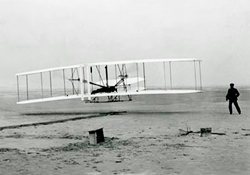 Orville and Wilbur Wright succeed with the first controlled flight in a heavier-than-air machine.
Orville and Wilbur Wright succeed with the first controlled flight in a heavier-than-air machine.
1903
 The concepts of PHENOTYPE, GENOTYPE, and SELECTION were introduced and clearly defined by Wilhelm Ludwig Johannsen.
The concepts of PHENOTYPE, GENOTYPE, and SELECTION were introduced and clearly defined by Wilhelm Ludwig Johannsen.
L. de Vesly describes first- to third-century remains at Gallo Roman temples and wells near Rouen, France. Finds there include a cache of Neolithic axes and fossil sea urchins — evidence of association of axes and urchins over thousands of years.
 Carl Neuberg first used the term BIOCHEMISTRY.
Carl Neuberg first used the term BIOCHEMISTRY.
The Russo-Japanese war begins with a surprise attack by the Imperial Japanese Navy against the Russian far East Fleet, while it was at anchor at Port Arthur.
1904
 Entomologist George Willis Kirkaldy publishes species descriptions of a series of insects whose names all end in "-chisme" (pronounced "kiss me"), such as Ohchisme, Dolichisme, Elachisme, Florichisme, Isachisme, Marichisme, Nanichisme, Peggichisme, and Polychisme. Kirkaldy's proposed names preface -chisme with the names of various women from alleged romantic conquests. In 1912 a letter to the International Entomological Congress from Lord Walsingham sought to make these names invalid on the basis of their being non-classical in their derivation. Kirkaldy himself had been a firm adherent to the principle of priority and was against any form of orthographic emendation to the spelling proposed by the original authors.
Entomologist George Willis Kirkaldy publishes species descriptions of a series of insects whose names all end in "-chisme" (pronounced "kiss me"), such as Ohchisme, Dolichisme, Elachisme, Florichisme, Isachisme, Marichisme, Nanichisme, Peggichisme, and Polychisme. Kirkaldy's proposed names preface -chisme with the names of various women from alleged romantic conquests. In 1912 a letter to the International Entomological Congress from Lord Walsingham sought to make these names invalid on the basis of their being non-classical in their derivation. Kirkaldy himself had been a firm adherent to the principle of priority and was against any form of orthographic emendation to the spelling proposed by the original authors.
 An obscure Swiss patent clerk, Albert Einstein, formulates the special theory of relativity and ushers in the atomic age.
An obscure Swiss patent clerk, Albert Einstein, formulates the special theory of relativity and ushers in the atomic age.
The National Forest Service is established in the United States by Gifford Pinchot.
1905
K. S. Merezhkovsky suggests that chloroplasts originated as a cyanobacterium swallowed by a protozoan, i.e., algal and plant cells result from two independent organisms that became symbionts. The idea will be largely forgotten until it is suggested again in the 1960s.
 Lucien Claude Cuénot performs crosses between mice carrying a gene that gives them yellow fur. Since they always produce yellow furred and agouti offspring in a 2:1 ratio, he concludes they are heterozygous. (In 1910, W. E. Castle and C. C. Little will show that yellow homozygotes die in utero. This dominant allele is thus the first gene shown to behave as a homozygous lethal.)
Lucien Claude Cuénot performs crosses between mice carrying a gene that gives them yellow fur. Since they always produce yellow furred and agouti offspring in a 2:1 ratio, he concludes they are heterozygous. (In 1910, W. E. Castle and C. C. Little will show that yellow homozygotes die in utero. This dominant allele is thus the first gene shown to behave as a homozygous lethal.)
 The Swimming Reindeer — the largest ivory carving from the late Ice Age yet found — is pieced together by Abbé Henri Breuil from two reindeer carved from mammoth ivory found decades earlier by Peccadeau de l'Isle.
The Swimming Reindeer — the largest ivory carving from the late Ice Age yet found — is pieced together by Abbé Henri Breuil from two reindeer carved from mammoth ivory found decades earlier by Peccadeau de l'Isle.
 An All-India Muslim League is founded by Sultan Mahommed Shah, Aga Khan III.
An All-India Muslim League is founded by Sultan Mahommed Shah, Aga Khan III.
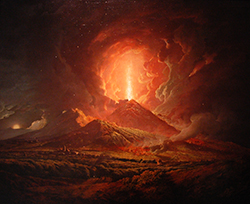 Mount Vesuvius erupts, devastating the town of Ottaiano, Italy
Mount Vesuvius erupts, devastating the town of Ottaiano, Italy
The Great San Francisco Earthquake kills seven hundred people and causes more than $400 million in property losses.
The world's largest battleship — the Satsuma — is launched in Japan.
1906

 William Bateson and Reginald Crundall Punnett report the discovery of two new genetic principles: LINKAGE and GENE INTERACTION.
William Bateson and Reginald Crundall Punnett report the discovery of two new genetic principles: LINKAGE and GENE INTERACTION.
In his presidential address to the Geological Society of America, Raphael Pumpelly claims that the end of the Pleistocene started the Neolithic Revolution.
 Alain Locke of Philadelphia, a Harvard graduate, becomes the first African-American Rhodes scholar to study at Oxford University in England.
Alain Locke of Philadelphia, a Harvard graduate, becomes the first African-American Rhodes scholar to study at Oxford University in England.
Robert Baden-Powell founds the Boy Scout movement, in Britain.
1907
Chemist Bertram Boltwood measures the ratio of isotopes of uranium and lead in a mineral from Connecticut. He concludes the mineral formed 410 million years ago. His estimate will later be changed to 265 million, but this experiment lays the groundwork for radiometric dating techniques.
P. Raymond describes a Neolithic deposit in Saône-et-Loire in France containing an axe with three fossil sea urchins.
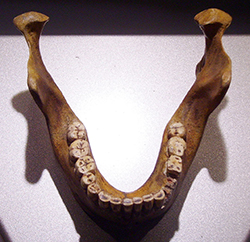 The Mauer jaw is discovered in Germany. On October 21, 1907, Daniel Hartmann, a worker at a sand mine in the Grafenrain open field system of the Mauer community unearthed a mandible at a depth of 24.63 m (80.81 ft), which he recognized as of human origin.[4] He was aware of the likelihood of finds, as for 20 years the Heidelberg scholar Otto Schoetensack had asked that the workers at the sand mine be encouraged to look out for fossils, after the well-preserved skull of a straight-tusked elephant had come to light there in 1887. Schoetensack had the workers taught the characteristics of human bones based on recent examples on his regular visits to the sand mine in search for "traces of mankind". The mandible will become the type specimen for Homo heidelbergensis (Archaic Homo sapiens, precursors to Neanderthals).
The Mauer jaw is discovered in Germany. On October 21, 1907, Daniel Hartmann, a worker at a sand mine in the Grafenrain open field system of the Mauer community unearthed a mandible at a depth of 24.63 m (80.81 ft), which he recognized as of human origin.[4] He was aware of the likelihood of finds, as for 20 years the Heidelberg scholar Otto Schoetensack had asked that the workers at the sand mine be encouraged to look out for fossils, after the well-preserved skull of a straight-tusked elephant had come to light there in 1887. Schoetensack had the workers taught the characteristics of human bones based on recent examples on his regular visits to the sand mine in search for "traces of mankind". The mandible will become the type specimen for Homo heidelbergensis (Archaic Homo sapiens, precursors to Neanderthals).
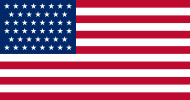 The US flag is modified to have forty-six stars, reflecting the addition of one new state: Oklahoma.
The US flag is modified to have forty-six stars, reflecting the addition of one new state: Oklahoma.
The Young Turk revolution restores the Constitution and parliamentary government in the Ottoman Empire.
1908
 Godfrey Harold Hardy, a Cambridge mathematician, writes a letter to the editor of Science, suggesting that Mendelian mechanisms acting alone have no effect on allele frequencies. The letter begins, I am reluctant to intrude in a discussion concerning matters of which I have no expert knowledge, and I should have expected the very simple point which I wish to make to have been familiar to biologists. However,... This short (less than one page) letter constitutes Hardy's entire lifetime contribution to the field of biology, yet still forms the mathematical basis for population genetics.
Godfrey Harold Hardy, a Cambridge mathematician, writes a letter to the editor of Science, suggesting that Mendelian mechanisms acting alone have no effect on allele frequencies. The letter begins, I am reluctant to intrude in a discussion concerning matters of which I have no expert knowledge, and I should have expected the very simple point which I wish to make to have been familiar to biologists. However,... This short (less than one page) letter constitutes Hardy's entire lifetime contribution to the field of biology, yet still forms the mathematical basis for population genetics.
Amadee and Jean Bouyssonie find a Neanderthal skeleton in a pit at La Chapelle-aux-Saints. The find spurs hypotheses of intentional Neanderthal burial of the dead, although some anthropologists will dispute this interpretation several decades later.
Charles and George Sternberg discover a dinosaur mummy, a duckbill dinosaur with skin, tendons and bits of flesh all fossilized.
The National Association for the Advancement of Colored People (NAACP) is formed on February 12 in New York City.
 William Howard Taft becomes twenty-seventh president of the United States.
William Howard Taft becomes twenty-seventh president of the United States.
Tel Aviv, the first Jewish town in modern Palestine, is founded.
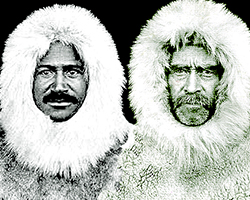 United States explorer Commander Robert E. Peary, accompanied by Matthew Henson, is the first person to reach North Pole.
United States explorer Commander Robert E. Peary, accompanied by Matthew Henson, is the first person to reach North Pole.
1909
 A. E. Garrod publishes Inborn Errors of Metabolism, the earliest discussion of the biochemical genetics of man (or any other species).
A. E. Garrod publishes Inborn Errors of Metabolism, the earliest discussion of the biochemical genetics of man (or any other species).
 George H. Shull advocates the use of self-fertilized lines in production of commercial seed corn. The hybrid corn program that resulted, created an abundance of foodstuffs worth billions of dollars.
George H. Shull advocates the use of self-fertilized lines in production of commercial seed corn. The hybrid corn program that resulted, created an abundance of foodstuffs worth billions of dollars.
H. Nilsson Ehle puts forward the multiple-factor hypothesis to explain the quantitative inheritance of seed-coat color in wheat.
 W. Johannsen's studies of the inheritance of seed size in self-fertilized lines of beans leads him to realize the necessity of distinguishing between the appearance of an organism and its genetic constitution. He invents the terms PHENOTYOPE and GENOTYPE to serve this purpose, and he also coins the word GENE.
W. Johannsen's studies of the inheritance of seed size in self-fertilized lines of beans leads him to realize the necessity of distinguishing between the appearance of an organism and its genetic constitution. He invents the terms PHENOTYOPE and GENOTYPE to serve this purpose, and he also coins the word GENE.
Abbé Breuil depicts a presumed Neanderthal burial at La Ferrassie.
Arthur Smith Woodward lectures the British Association for the Advancement of Science on "excess growth" and tooth loss in dinosaurs, citing these things as evidence of "racial senility" that doomed the dinosaurs to extinction.
Charles Doolittle Walcott starts digging fossils of soft-bodied animals in the Burgess Shale in the Canadian Rockies. He proceeds to publish several papers in which he describes these animals, which lived over 500 million years ago, as primitive ancestors of modern groups.
ESP Quick Facts
ESP Origins
In the early 1990's, Robert Robbins was a faculty member at Johns Hopkins, where he directed the informatics core of GDB — the human gene-mapping database of the international human genome project. To share papers with colleagues around the world, he set up a small paper-sharing section on his personal web page. This small project evolved into The Electronic Scholarly Publishing Project.
ESP Support
In 1995, Robbins became the VP/IT of the Fred Hutchinson Cancer Research Center in Seattle, WA. Soon after arriving in Seattle, Robbins secured funding, through the ELSI component of the US Human Genome Project, to create the original ESP.ORG web site, with the formal goal of providing free, world-wide access to the literature of classical genetics.
ESP Rationale
Although the methods of molecular biology can seem almost magical to the uninitiated, the original techniques of classical genetics are readily appreciated by one and all: cross individuals that differ in some inherited trait, collect all of the progeny, score their attributes, and propose mechanisms to explain the patterns of inheritance observed.
ESP Goal
In reading the early works of classical genetics, one is drawn, almost inexorably, into ever more complex models, until molecular explanations begin to seem both necessary and natural. At that point, the tools for understanding genome research are at hand. Assisting readers reach this point was the original goal of The Electronic Scholarly Publishing Project.
ESP Usage
Usage of the site grew rapidly and has remained high. Faculty began to use the site for their assigned readings. Other on-line publishers, ranging from The New York Times to Nature referenced ESP materials in their own publications. Nobel laureates (e.g., Joshua Lederberg) regularly used the site and even wrote to suggest changes and improvements.
ESP Content
When the site began, no journals were making their early content available in digital format. As a result, ESP was obliged to digitize classic literature before it could be made available. For many important papers — such as Mendel's original paper or the first genetic map — ESP had to produce entirely new typeset versions of the works, if they were to be available in a high-quality format.
ESP Help
Early support from the DOE component of the Human Genome Project was critically important for getting the ESP project on a firm foundation. Since that funding ended (nearly 20 years ago), the project has been operated as a purely volunteer effort. Anyone wishing to assist in these efforts should send an email to Robbins.
ESP Plans
With the development of methods for adding typeset side notes to PDF files, the ESP project now plans to add annotated versions of some classical papers to its holdings. We also plan to add new reference and pedagogical material. We have already started providing regularly updated, comprehensive bibliographies to the ESP.ORG site.
ESP Picks from Around the Web (updated 06 MAR 2017 )
Old Science

Weird Science

Treating Disease with Fecal Transplantation
Fossils of miniature humans (hobbits) discovered in Indonesia

Dinosaur tail, complete with feathers, found preserved in amber.
Astronomy

Mysterious fast radio burst (FRB) detected in the distant universe.